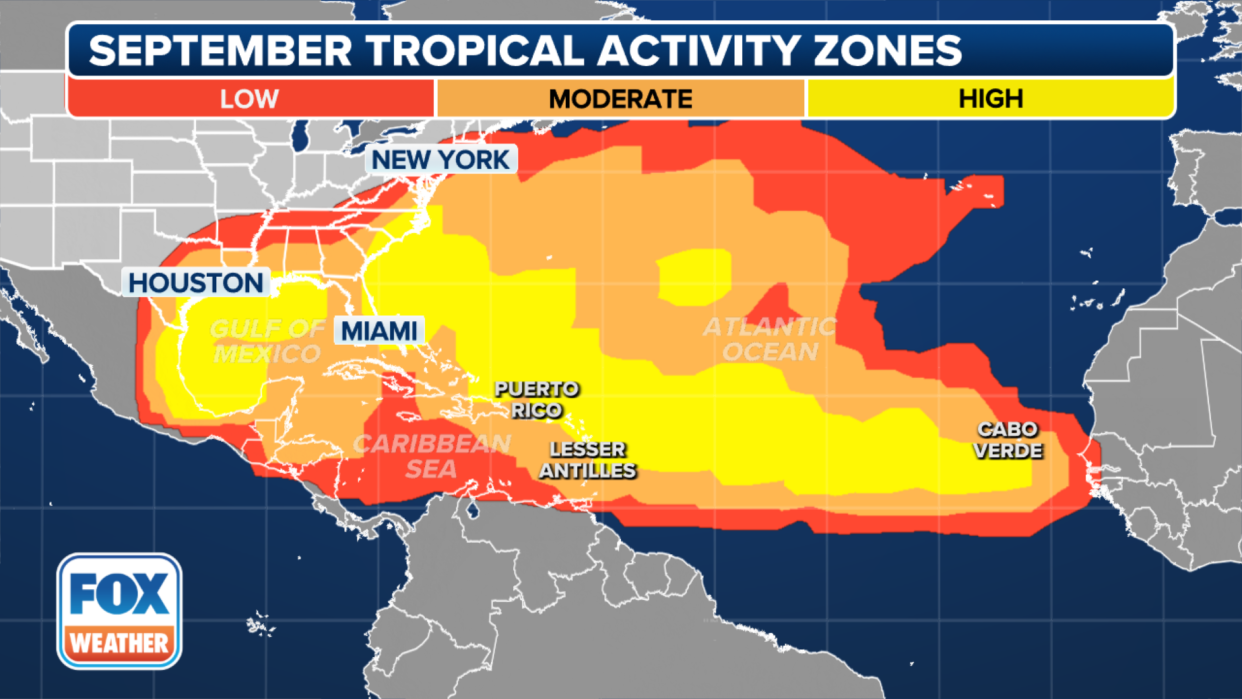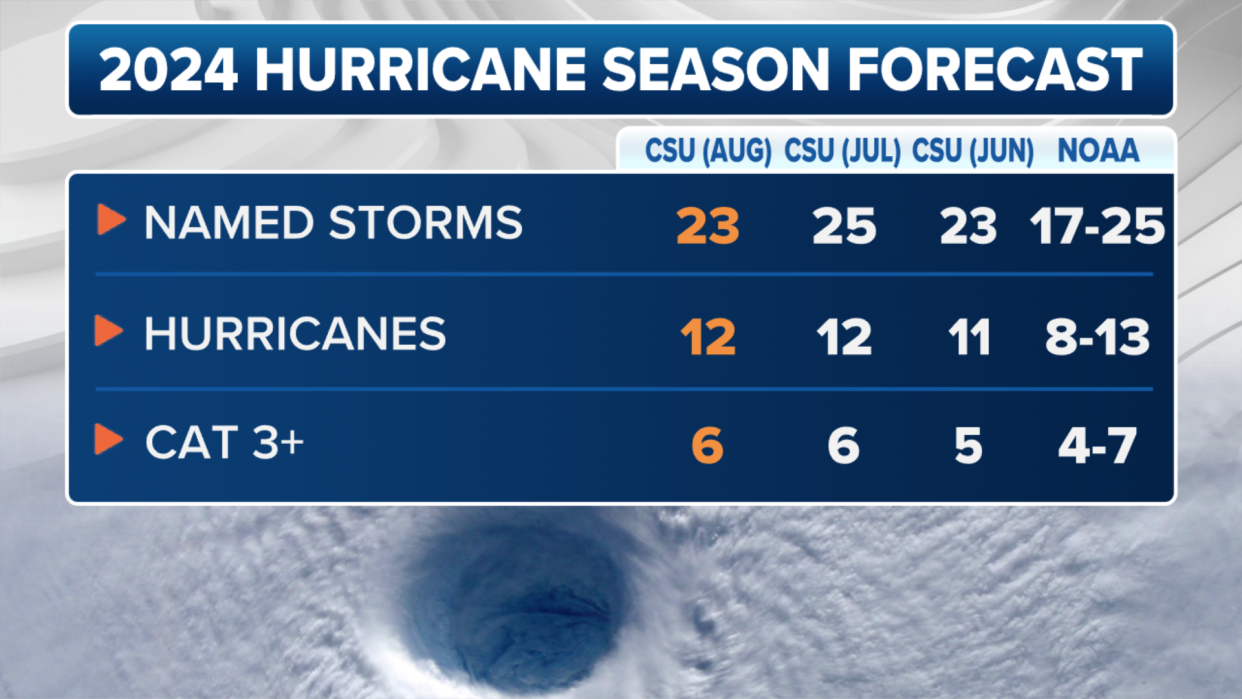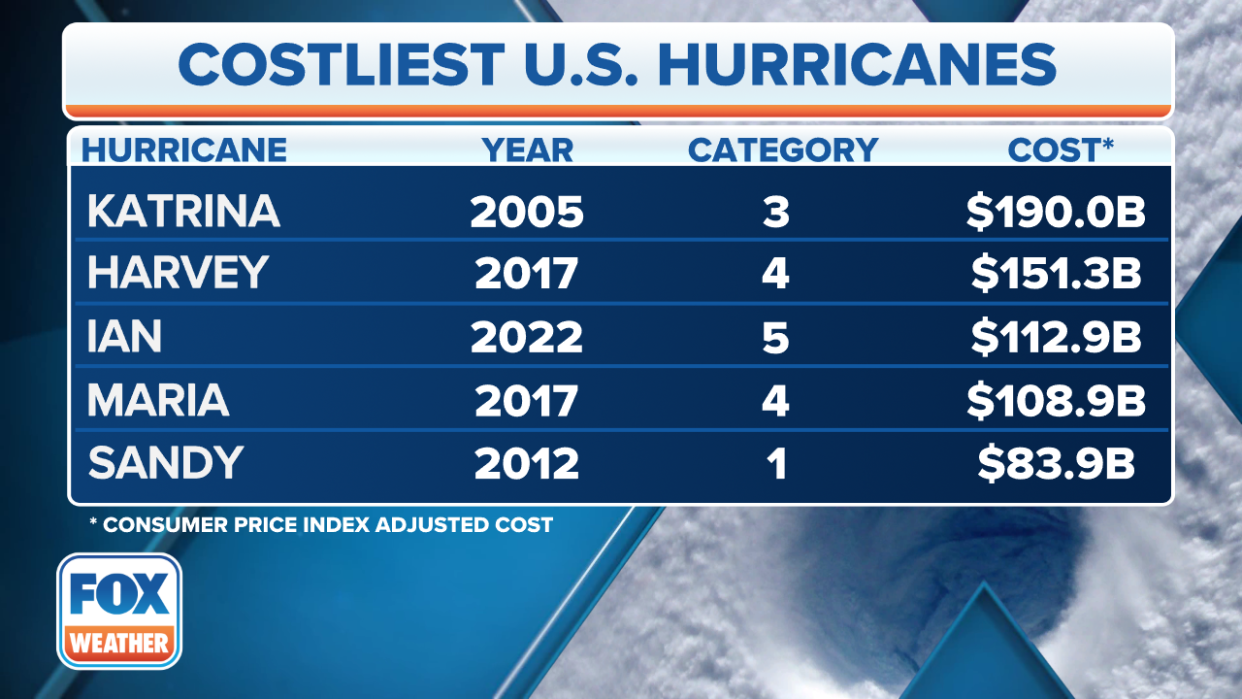September to make or break robust hurricane season outlooks
The Atlantic hurricane season is entering what is usually the busiest month, but after a relatively quiet August, all eyes are on September to see if it will perk up and live up to its active billing.
So far in the 2024 season, five named storms have formed, and three have strengthened into at least Category 1 hurricanes.
The basin also experienced its earliest Category 5 hurricane in history, but, aside from Beryl, organized activity has been limited.
The rate of tropical cyclone formation is more than a week behind the average for this time of year, but the strength of the systems has been ahead of schedule.
While the average numbers entering September should be six named systems, two hurricanes and zero majors, the basin has only seen five named storms, three hurricanes and one major.
If additional hurricane development doesn’t happen before Sept. 7, the season will fall back to being at a normal state in all three categories, except for the in Accumulated Cyclone Energy, or what is known as the ACE.
On its current trajectory, it’ll get back to a normal season state during the second week of September, barring any future development. The Atlantic basin is the only ocean that has reported above normal activity this year, with most other waterways down 30-50% in activity.
An average September produces nearly 30% of a season’s named storms, more than 40% of all hurricanes, and over 60% of major hurricanes.
ATLANTIC HURRICANE SEASON REACHES CLIMATOLOGICAL PEAK SEPT. 10
The FOX Forecast Center said the month will start out as quiet as August ended, with no active cyclones to track in the basin, though there is one disturbance in the Atlantic that currently has moderate odds of development over the next week.
Water temperatures remain well above average across some parts of the Atlantic basin, but other ingredients, such as moisture, areas of low pressure, etc., have simply not been present to lead to a significant increase in activity.
At times, the Saharan dust layer became remarkably intense, achieving a level of impact not observed in years across the region.

The scenario of reduced tropical activity has occurred in every basin of the planet, which could be an indication that climate change is playing a more substantial role than some forecasts acknowledge.
The overall reduction in activity is not unheard of as tropical weather experts, including CSU’s Phil Klotzbach, have long suggested that global tropical cyclone activity is on the decline worldwide, especially in the Western Pacific.
"By investigating global TC activity from 1990 to 2021, we find significant decreasing trends in global hurricane numbers and ACE, primarily due to a significant decreasing trend in the western North Pacific," researchers stated in the 2022 report. Though the study noted an increase in tropical cyclone-related damage and rapid intensification events.
There are just over 12 weeks remaining in the season, with Sept. 10 being the climatological peak for activity.
WHAT IS THE ENSO CYCLE OF LA NIÑA AND EL NIÑO?

Many outlooks expected 20-30 named storms to form during the season, figures that are becoming more difficult to achieve with each passing day. The basin would have to average 1-2 new named storms per week through the rest of the hurricane season, which runs through Nov. 30, but activity tends to significantly drop off by late October and early November.
The most cyclones any modern season has produced after Sept. 1 was 15 named storms in 2020, but the season also started on a fast leg, with 15 named storms during the first three months as well.
A season that produces near-normal cyclone activity can be just as impactful as a year with many storms.
The 2022 season was considered to be near a normal season with 14 named storms, eight hurricanes and two majors, but saw the production of Hurricane Ian, which resulted in the year becoming the third costliest in history.
The 1992 season was another near-normal year but produced the record-breaking Hurricane Andrew, which set the modern standard for devastating events.
In contrast, 2023 was considered to be a busier-than-average season with 20 named storms but was the least impactful for the U.S. in a decade.
The amount of seasonal activity does not correlate with whether a season will be impactful in the U.S. or any other country with a coastline in the basin.
The number of fatalities and estimated damage caused by tropical cyclones this year has already exceeded last season's totals, with more than half of the season still to come.

Original article source: September to make or break robust hurricane season outlooks
